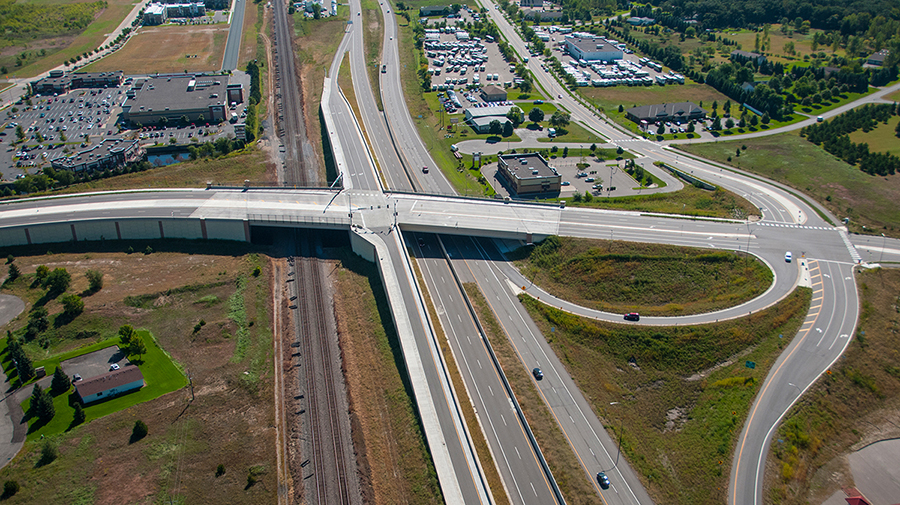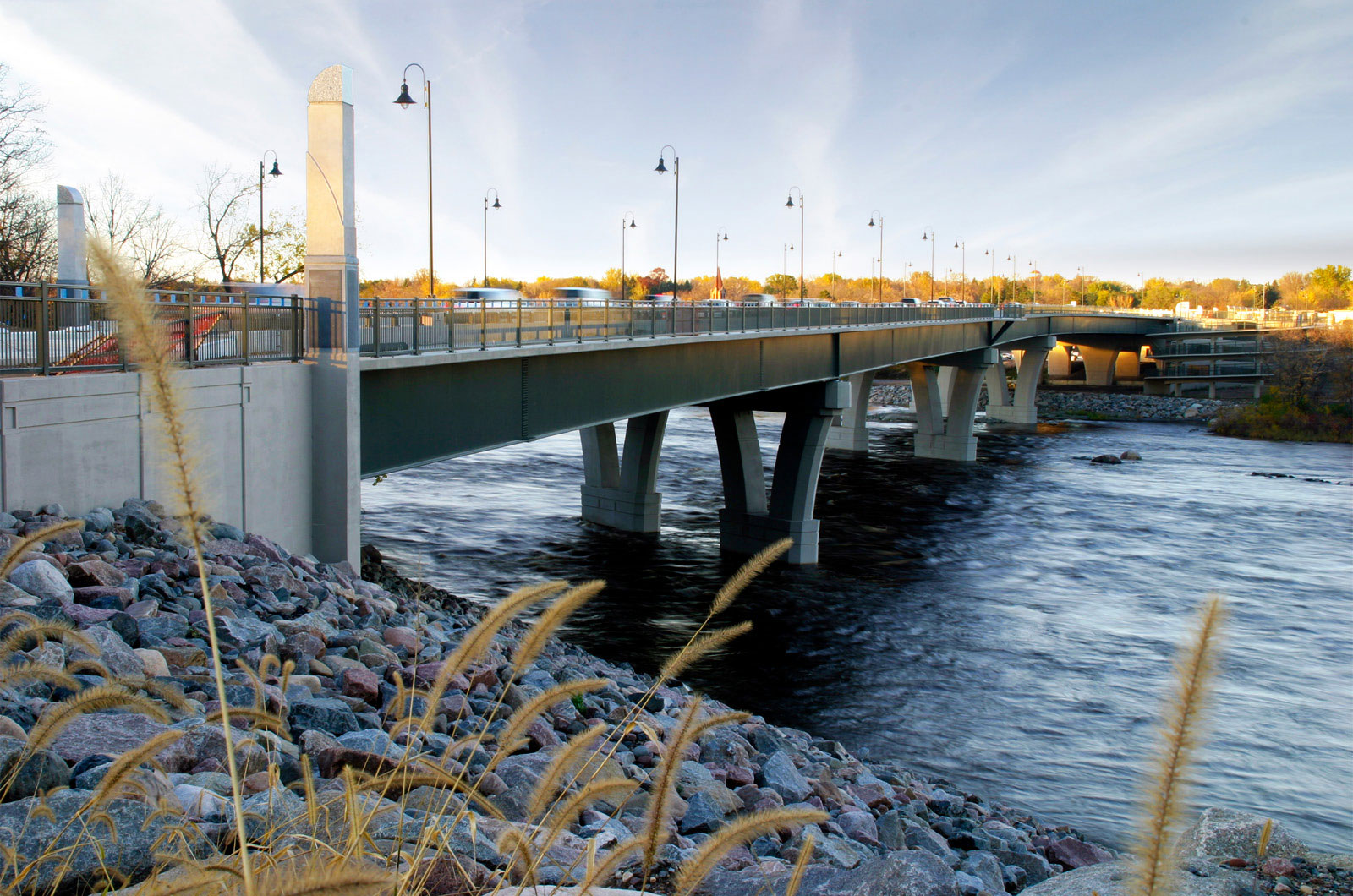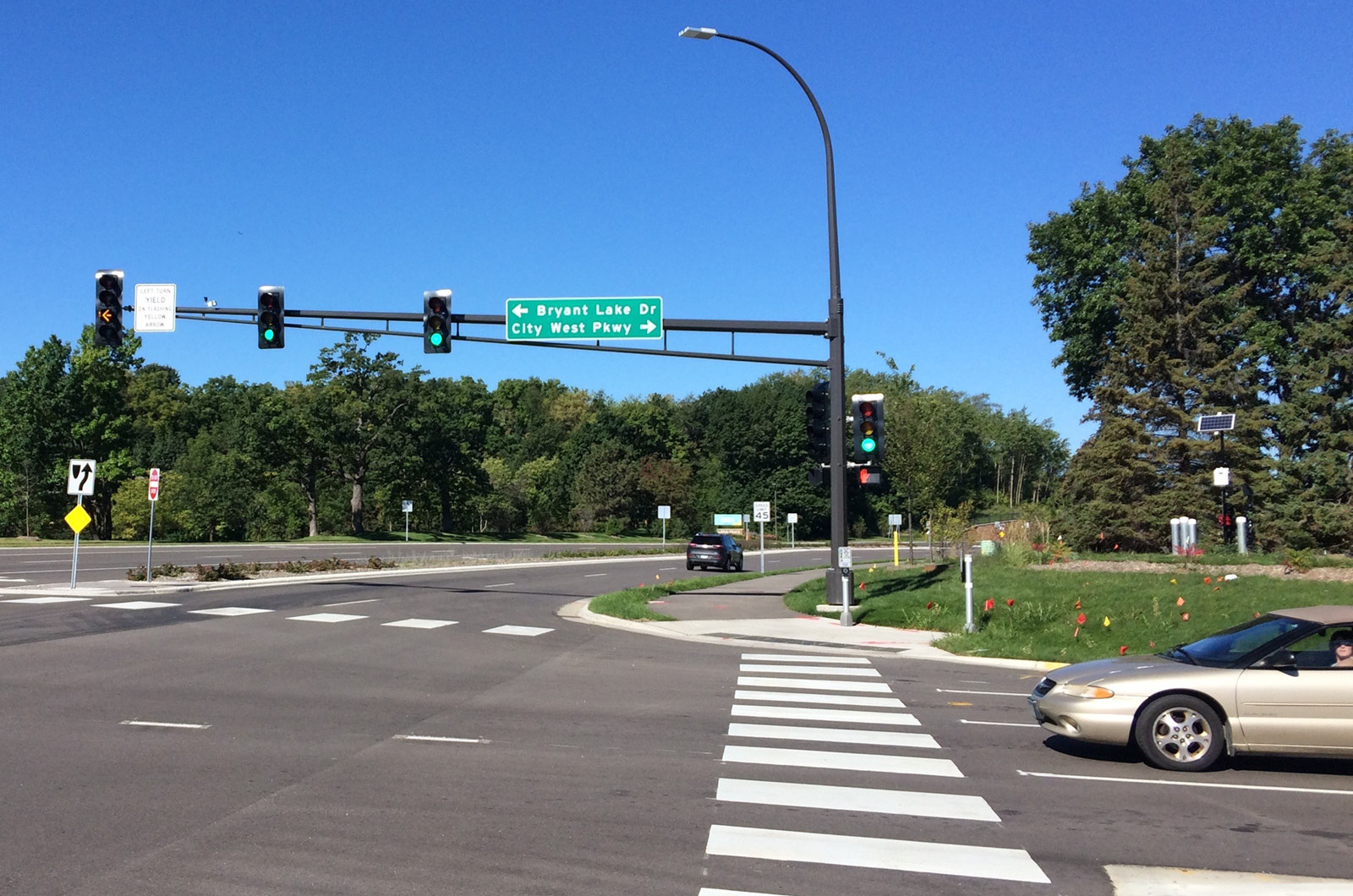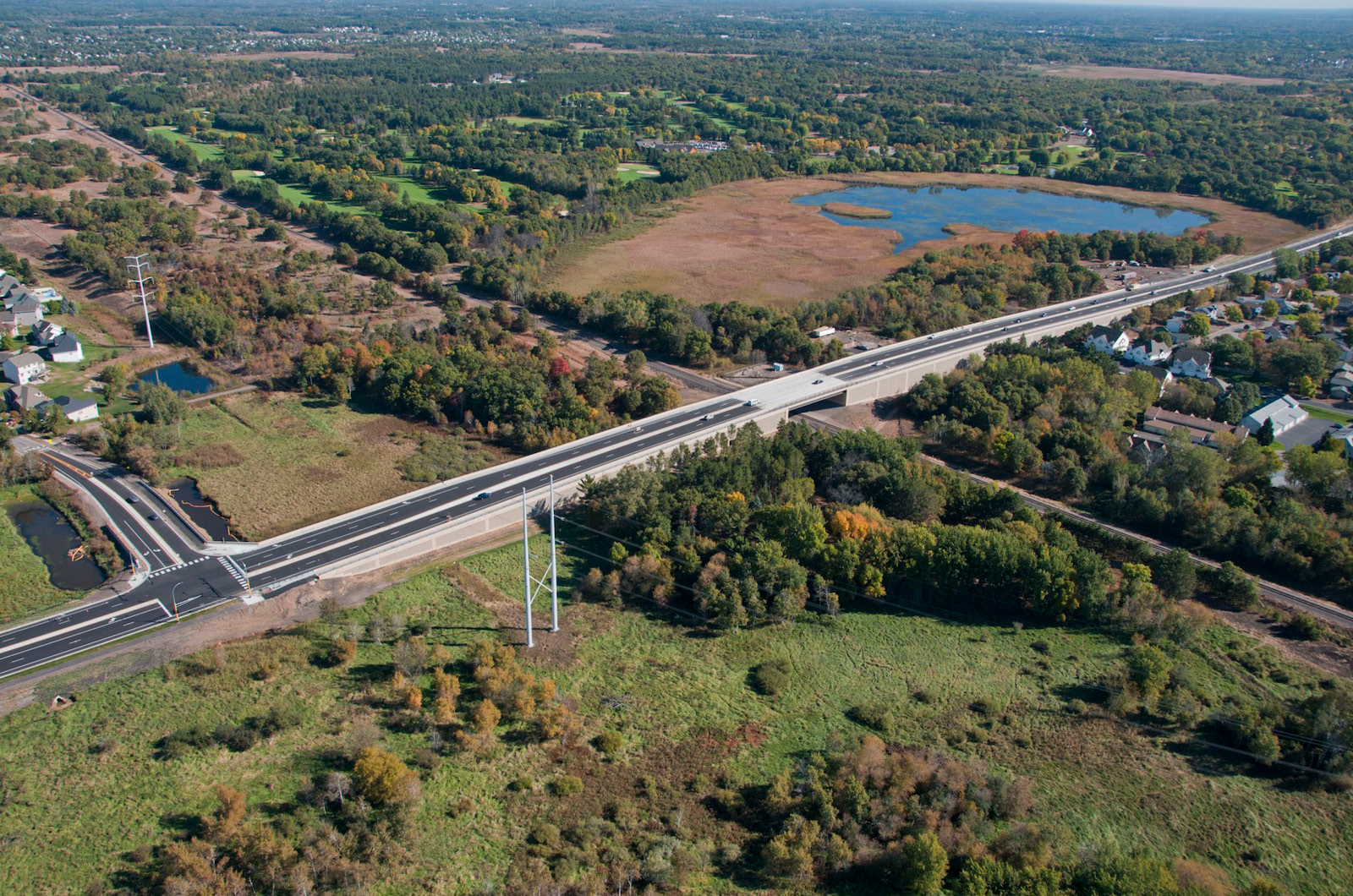Planning & Design for a Safer, More Connected Corridor
The CSAH 112 reconstruction project in Long Lake, Minnesota, was led by Hennepin County to enhance safety, mobility, and infrastructure along this key corridor. Originally part of Minnesota’s trunk highway system as TH 12, the roadway was designed to prioritize traffic flow but did not fully accommodate pedestrian and bicycle connectivity, local access, and safety improvements. Following the construction of the TH 12 bypass, jurisdiction was transferred to Hennepin County, allowing for a more community-focused redesign.
Hennepin County selected SRF and Gale-Tec to lead design services for the four-mile corridor, including roadway and trail design, water resource management, traffic analysis, environmental documentation, right-of-way coordination, cost estimation, and construction documentation.
The project also included two unique water resource and geotechnical challenges due to the corridor’s proximity to Long Lake and Long Lake Creek:
- Long Lake Shoreline Stabilization and Reinforced Soil Slope (RSS) Wall Design – The roadway runs adjacent to Long Lake for approximately 1,400 feet, where wave action and erosion threatened the stability of the roadbed. SRF conducted wave run-up analysis and revetment protection design, integrating these efforts with the RSS wall designed by Gale-Tec to reinforce the roadway with geosynthetics and soil stabilization techniques.
- Long Lake Creek Realignment – The 300-foot realignment of Long Lake Creek, which flows between steep slopes and residential areas, required a solution that balanced hydraulic performance, erosion control, and natural aesthetics. SRF implemented bioengineering techniques, live staking, geosynthetics, and hard armoring to create a more resilient and ecologically sound waterway.
Given the narrow corridor and constrained work areas, construction sequencing and staging were key considerations. SRF developed a phased staging plan that minimized disruptions while allowing for safe and efficient construction.
Throughout the construction phase, SRF provided shop drawing reviews, engineering support, and on-site observation to ensure the successful implementation of design elements. The completed CSAH 112 corridor improvements enhance roadway safety, pedestrian and bicycle access, and infrastructure resilience, providing a safer and more connected transportation route through Long Lake.
Resource links:
Hennepin County Public Works
City of Long Lake
Minnesota Department of Transportation (MnDOT)
More from:
Minneapolis, MN
Traffic and Technologies
Water and Environment View All Projects







